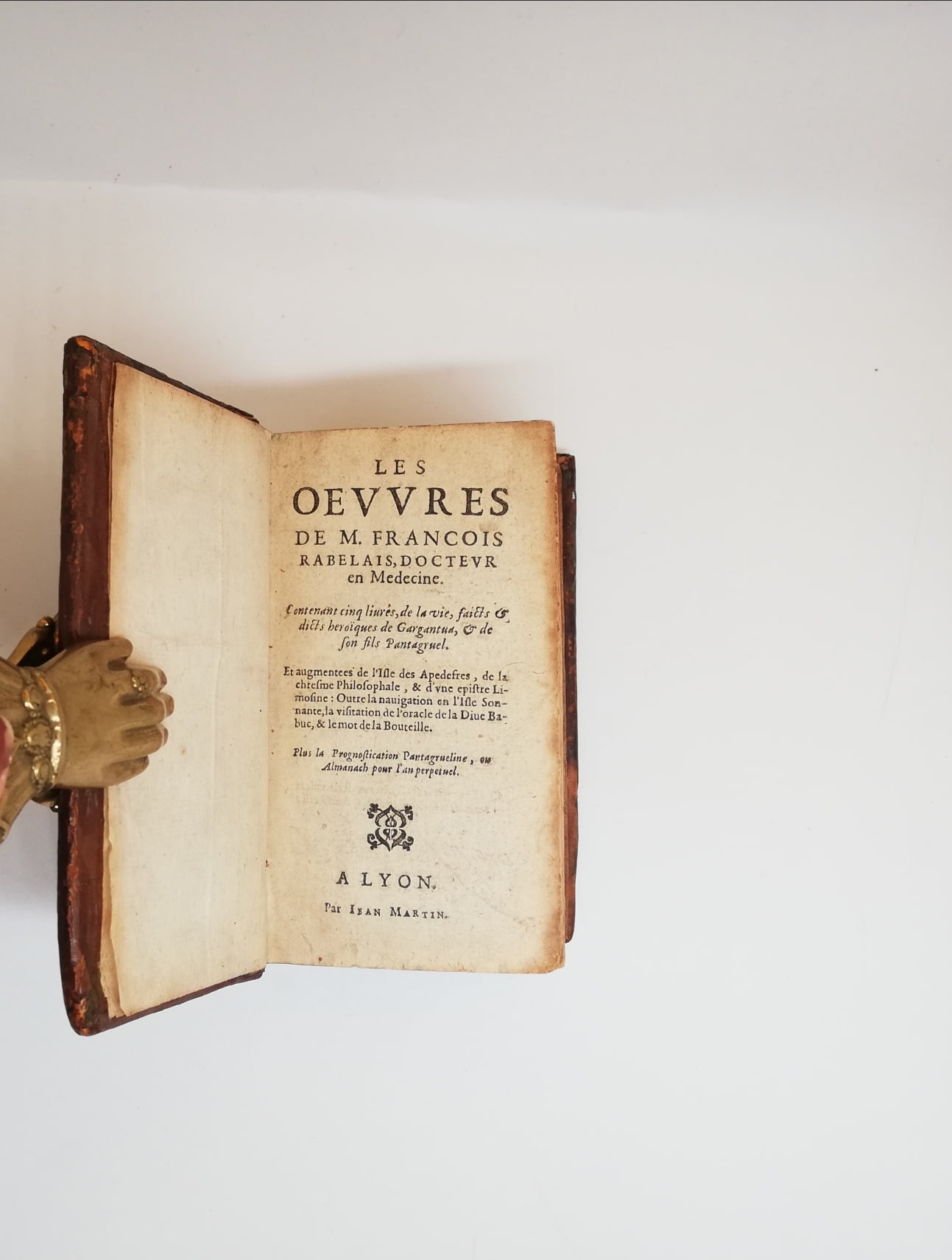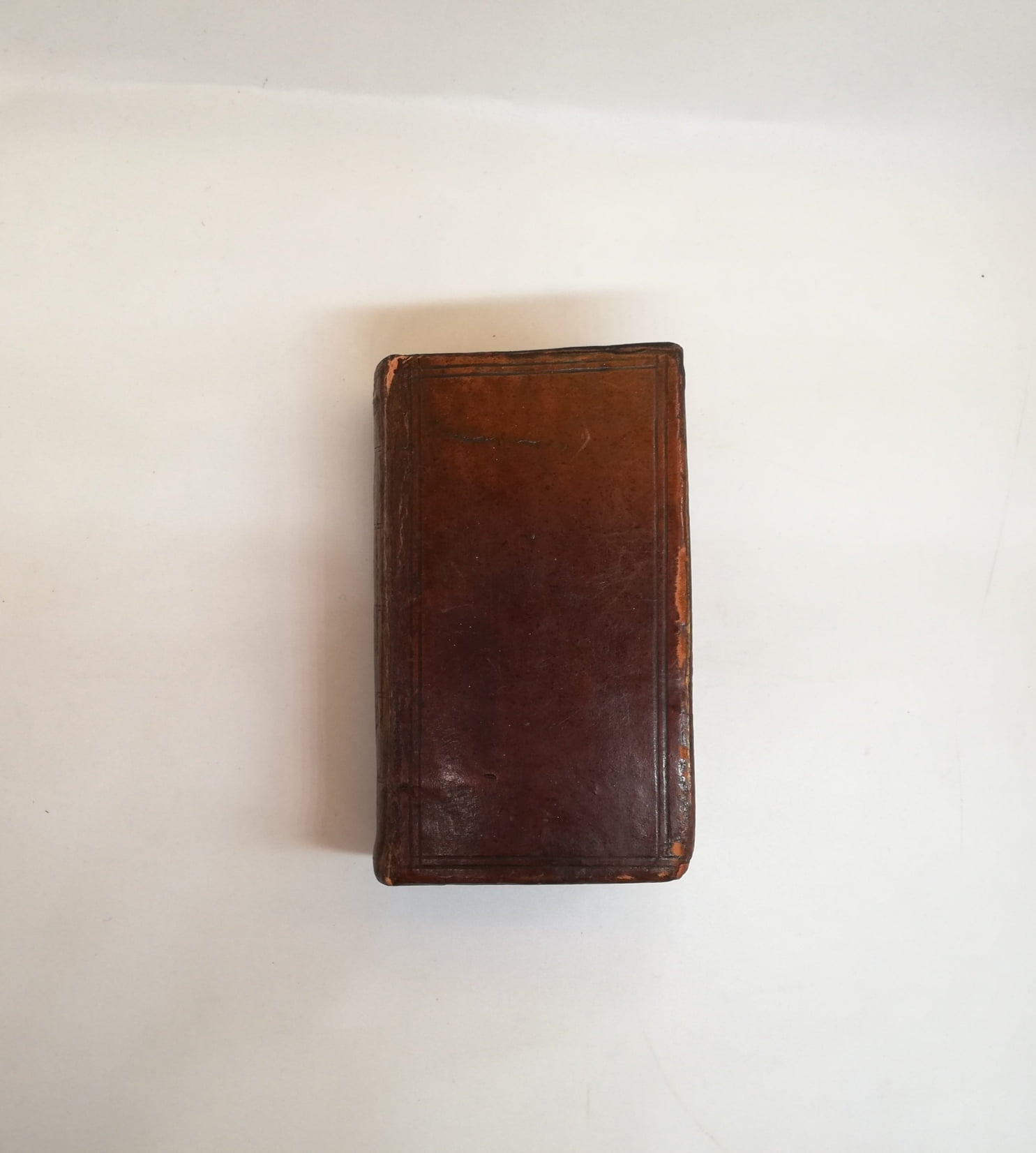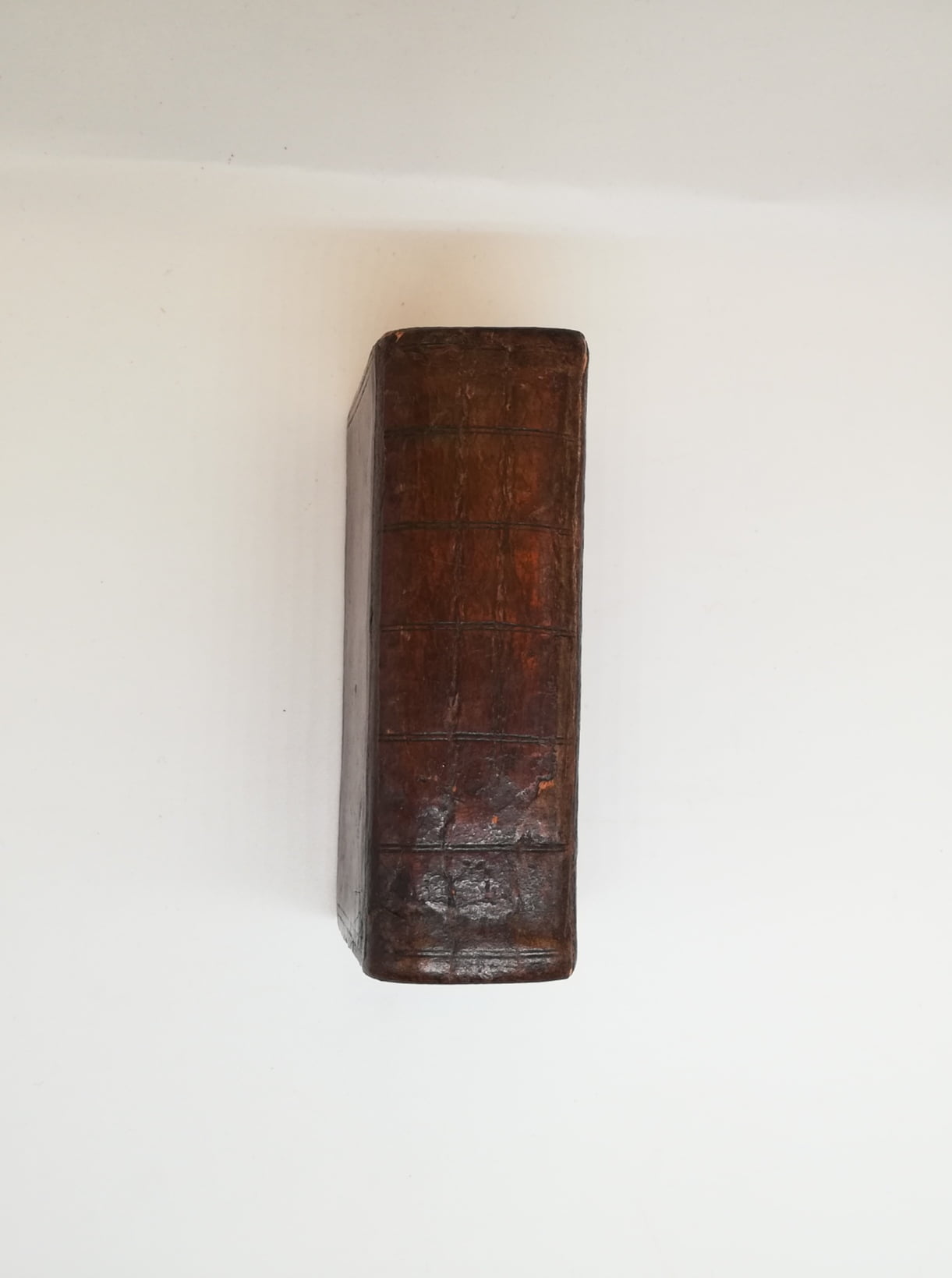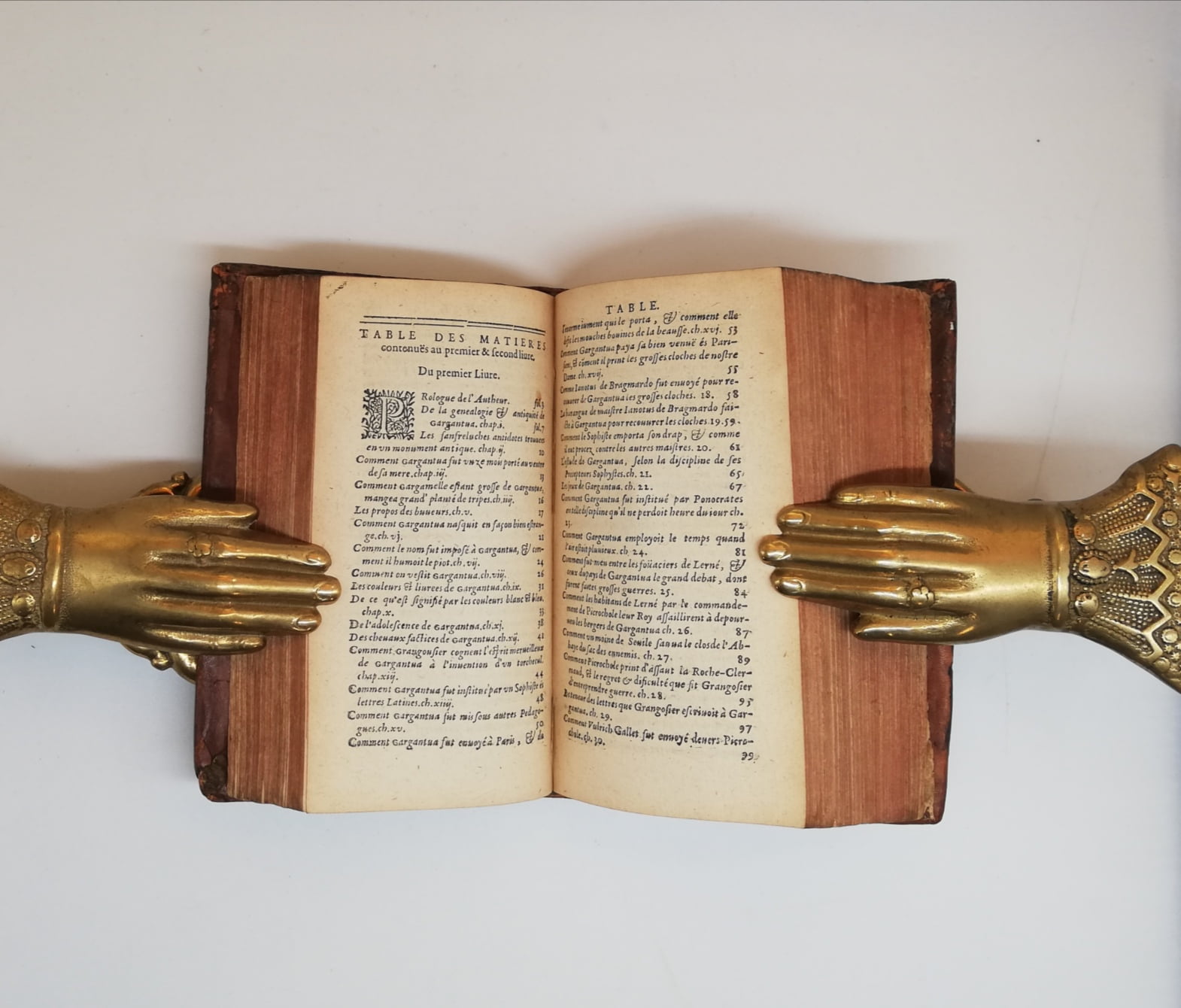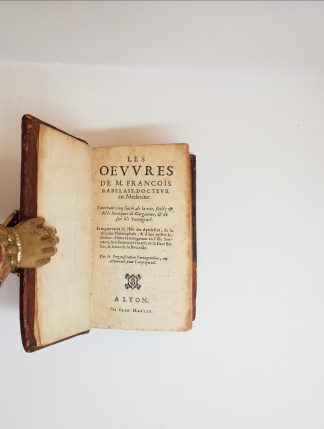RABELAIS, François
Les oeuvres : la vie, faicts & dicts heroïques de Gargantua, & de son fils Pantagruel
Lyon, Jean Martin, circa 1620£2,950.00
12mo. pp. [ii], 3-347, [vii], 469, [ix, iii], 4-166, [xxii]. A-Z¹², Aa-Vu¹². Roman letter, some Italic. Small woodcut initials, typographical ornaments, full page woodcut Bottle on Tt3 recto, (not its logical place in the text). light age yellowing, first title fractionally dusty, minor marginal stains, one blank outer corner torn. A very good copy in contemporary English calf, covers bordered with a double blind rule, spine double blind ruled in compartments, skilful repairs to extremities and joints, a.e.r.
An excellent copy of this “Jean Martin” printing of the works of Rabelais, with the fine woodcut bottle incorporating an ode to its virtues, most unusually in a contemporary English calf binding. It is most probable the work was shipped to England in sheets and bound here, giving intriguing insight into the market for Rabelais in England. Rawles and Screech give 11 editions of Rabelais that share the same format, with exactly the same collation as this edition, most attributed to Jean Martin, two to Jean Fuet, all with most probably false dates, though it is generally held they were printed between 1600 and 1630 or at least no later than 1637. Rawles and Screech (no. 91) indicate that this edition, characterised by having no date on either of the title pages, was printed after one with the imprint of 1607, (no. 87) but was certainly printed before 1637. These editions were printed clandestinely and were near identical copies one from the other. Many early edns. of the various parts of Rabelais’ works do not state the printer or place of publication, or in a few cases give false information, owing to the ribald and in places anti-clerical subject-matter, which exposed his works to censorship: they had, for example, been on the papal Index since at least 1559. Due to the nature of their clandestine printing they were often cheaply and hastily printed and they were popular works, usually well read, so good copies such as this one are particularly rare.
“Rabelais was, for generations, read only in distorting editions which generated jokes of their own. All his Greek was turned into gibberish; careless arrangement of material by printers led Sterne to believe that Rabelais was sporting typographically with his reader by displacing a poem or by leaving blanks – hence the blanked-out chapter in Tristram Shandy. These editions – sometimes printed clandestinely in France – kept Rabelais alive but helped to create a ‘Rabelais legend’ which had nothing to do with the works he wrote. Montaigne enjoyed Rabelais, finding him at least ‘simplement plaisant’ (‘straightforwardly delightful’). Molière assumed that his audience enjoyed him too. And they did. For many Frenchmen Rabelais embodies that Gaulois humour which they love to see as a permanent element in the national character.” M. A. Screech. London Review of Books. Vol. 6 No. 17 · 20 September 1984. pages 11-13
“With an immense erudition, representing almost the whole knowledge of his time, with an untiring faculty of invention, with the judgement of a philosopher and the common sense of a man of the world, with an observation which let no characteristic of the time pass unobserved and with a ten-fold portion of the special Gallic gift of good-humoured satire, Rabelais united a height of speculation and depth of insight and vein of poetical imagination rarely found in any writer… his work is the mirror of the C16th. in France, reflecting at once its comeliness and its uncomeliness, its high aspirations, its voluptuous tastes, its political and religious dimensions, its keen criticism, its eager appetite and hasty digestions of learning, its gleans of poetry and its ferocity of manners”. – Enc. Brit. 13th. ed. A handsome copy in a contemporary English binding.
Rawles & Screech 91. Tchemerzine V 315. Brunet Suppl. Pt. II 368. Simon Bibl. Bacc. 555 (another ed.)In stock


